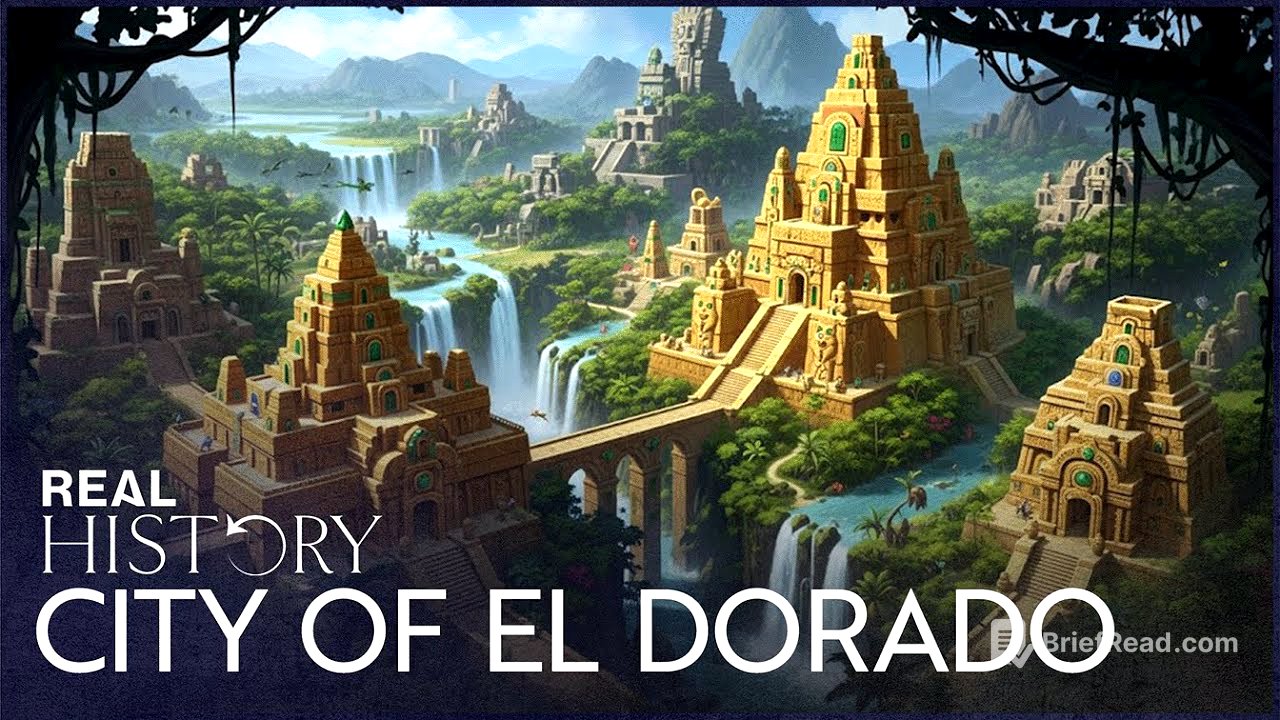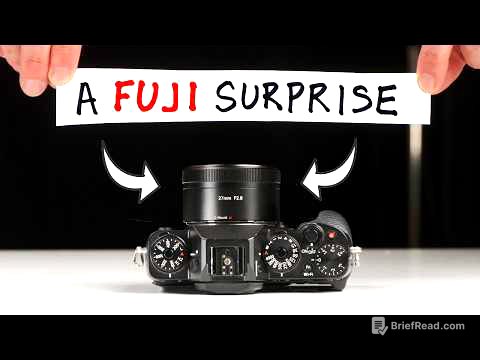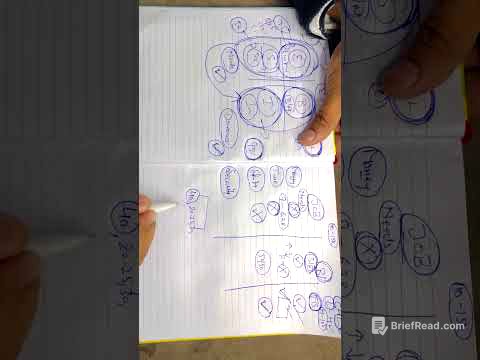TLDR;
The video explores the story of Percy Fawcett, a British explorer who dedicated his life to finding a lost city, which he called "Z," in the Amazon rainforest. Fawcett's quest was fueled by historical accounts, personal beliefs in ancient civilizations, and spiritual influences. Despite facing skepticism, financial setbacks, and the dangers of the Amazon, Fawcett embarked on multiple expeditions, ultimately disappearing with his son and a friend in 1925. Recent archaeological discoveries have revealed evidence of large, complex societies in the Amazon, supported by the use of "terra preta," a man-made fertile soil.
- Percy Fawcett's relentless pursuit of a lost Amazonian city.
- The influence of historical accounts and spiritual beliefs on Fawcett's quest.
- Archaeological evidence supporting the existence of ancient civilizations in the Amazon.
- The significance of "terra preta" in sustaining large populations in the Amazon.
The Legend of El Dorado and Percy Fawcett's Dream [0:02]
The legend of El Dorado, a city of gold in South America, captivated British explorer Percy Fawcett. He believed in the existence of a sophisticated civilization hidden deep within the Amazon jungle. In 1925, Fawcett, along with his son Jack and friend Raleigh, ventured into the Amazon, confident of success and riches. However, 30 days into their journey, they vanished. Fawcett's dream was not about gold but about a civilization with the power to transform lives.
The Making of an Explorer [2:22]
In 1906, Percy Fawcett was offered a job by the Bolivian government to map its borders with Brazil. Fawcett, known for his determination and diverse skills, was a trained mapmaker, geographical surveyor, and former British Secret Service spy. He viewed the assignment as a dream job, drawn to the romantic history and mystery of the Amazon. Despite family considerations, Fawcett felt destined to explore, a passion ignited in his childhood discovery of Roman remains.
The Allure of the Amazon [5:06]
From 1906 to 1911, Fawcett undertook several challenging surveying expeditions into the Amazon jungle. He possessed extraordinary field skills, navigating a hostile environment filled with disease and dangerous locals. Fawcett thrived in this environment, becoming increasingly fascinated by the Amazon and resigning from his surveying work in 1911 to pursue exploration.
The Quest for a Lost Civilization [7:33]
Fawcett sought a grand mission to satisfy his passion for exploration. He heard stories of an advanced civilization in Brazil and pieced them together like a jigsaw puzzle. Inspired by the discovery of Machu Picchu in 1911, Fawcett became convinced that an even more fabulous civilization existed in the Amazon. He drew inspiration from historical accounts, such as Francisco de Orellana's 1541 expedition, which described large populations and towns along the Amazon River.
Document 512 and the City of Z [11:21]
Fawcett discovered Document 512 in Rio's National Archives Library, an account by a Portuguese soldier named Raposo, who described a deserted city with grand plazas, columns, and buildings in the jungle. This document further fueled Fawcett's belief in the existence of an ancient civilization in the Amazon. Fawcett named the lost city "Z" and envisioned it as a monolithic city older than the oldest Egyptian discoveries, with inhabitants using an alphabetical writing system.
Spiritual Influences and the Path to Z [15:51]
Fawcett believed that the people in remote, hidden places possessed extraordinary abilities, influenced by his spiritual upbringing. His mother and wife were interested in spiritualism, and his brother was involved in the Theosophy movement. Fawcett was inspired by Helena Blavatsky's conviction that master priests lived in remote cities and could produce psychic messages. By 1914, Fawcett was getting closer to locating Z, envisioning it as a vast spiritual civilization.
The Interruption of World War I [17:51]
Fawcett's quest was interrupted by World War I, where he fought on the Western Front and received two medals for his service. After the war, he returned to England, more determined than ever to find Z. Fawcett believed that the lost cities held the answer to the enigma of ancient South America and the prehistoric world.
Setbacks and Frustrations [19:01]
Fawcett faced severe setbacks, including Britain's economic collapse after the war, making it difficult to raise money for his expedition. His professional colleagues questioned the validity of his quest, arguing that the Amazon's soil could not support a large society. Despite the challenges, Fawcett secured some funding from the Brazilian government with the support of the Royal Geographical Society.
The 1920 Expedition and its Failures [21:54]
In 1920, Fawcett returned to the Amazon with two companions, but the expedition was plagued by difficulties. Rains flooded their route, animals died, one companion suffered a mental breakdown, and the other left to get married. Undeterred, Fawcett carried on alone, driven by his obsession to find Z. After three months alone in the jungle, exhausted and without food, Fawcett abandoned the expedition.
Desperation and a New Plan [25:23]
Back in Devon, Fawcett spent two years frustrated by his failure. He went to New York to find backers for his next expedition, promoting it as the most important imaginable. However, he couldn't raise enough money and devised a new plan. Fawcett approached the National American Newspaper Alliance with the idea of sending minute-by-minute dispatches from the jungle, allowing readers to follow their quest.
The Final Expedition of 1925 [28:57]
In 1924, Fawcett returned to Britain, and with growing excitement and support, the Royal Geographical Society agreed to pay for their equipment. He raised around $5,000 and carefully selected his travel companions: his son Jack and his lifelong friend Raleigh Rimmel. Fawcett warned them of the risks, emphasizing the expedition's difficulty and danger. In January 1925, Fawcett, Jack, and Raleigh sailed from New York to Brazil, watched by the world's press.
Into the Unknown [32:37]
In February 1925, Fawcett, Jack, and Raleigh journeyed into the interior of Brazil, heading towards the upper Shingu River system, where Fawcett believed Z was located. Fawcett used runners to keep the public informed of their progress, sending reports that appeared in newspapers worldwide. However, private letters revealed difficulties, including Raleigh's foot being poisoned by insects.
The Last Letter and Disappearance [36:22]
On May 29, 1925, 39 days into their journey, they reached Dead Horse Camp. Fawcett wrote a letter to his wife, expressing concern about Raleigh's health but remaining upbeat. The next day, Fawcett sent the guide back with the letter and headed into uncharted territory with Jack and Raleigh. They vanished without a trace, sparking numerous search parties over the years.
The Unsolved Mystery [38:49]
The world waited for news of Fawcett and his companions, but there was only silence. His wife, Nina, maintained faith in his return, even years after his disappearance. Despite numerous search parties, their bodies were never found. The New York Times declared Fawcett's disappearance had set off more searches than those for El Dorado. The cause of their disappearance remains a mystery.
The Legacy and Recent Discoveries [41:49]
Recent scientific discoveries have revealed evidence of past civilizations in the area where Fawcett searched for Z. These sites show an extraordinary landscape with straight lines cutting across the savannah and thousands of isolated mounds of rich forest linked by giant causeways. Archaeologists have uncovered fragments of food remains, pottery, and human bones, indicating a huge civilization.
Terra Preta and the Agricultural Miracle [45:24]
The existence of these civilizations was made possible by the discovery of "terra preta," a man-made black earth that is incredibly productive. Scientists are now working to reproduce terra preta for use worldwide. Percy Fawcett was right about the existence of a society with a great treasure, but it wasn't gold; it was the knowledge of sustainable agriculture.









